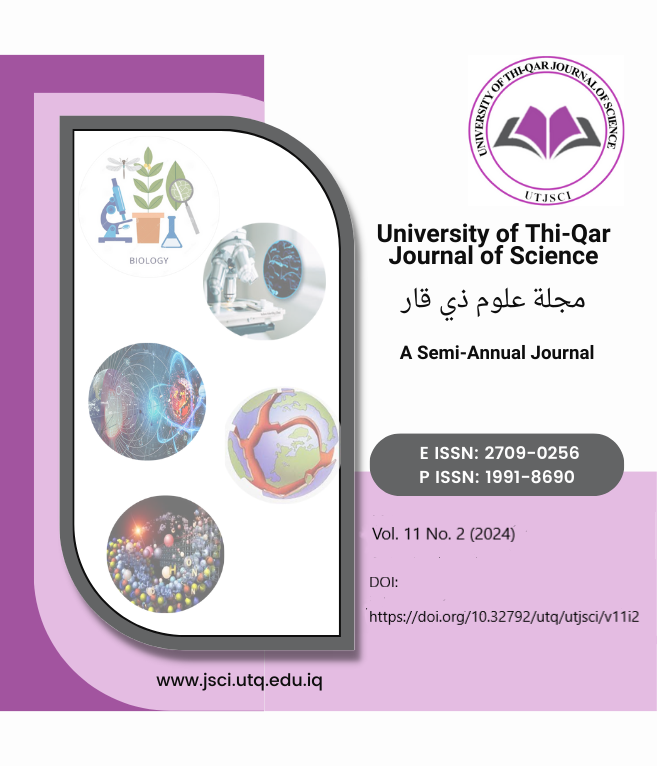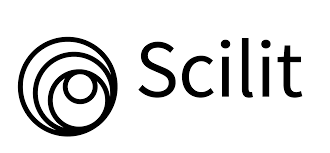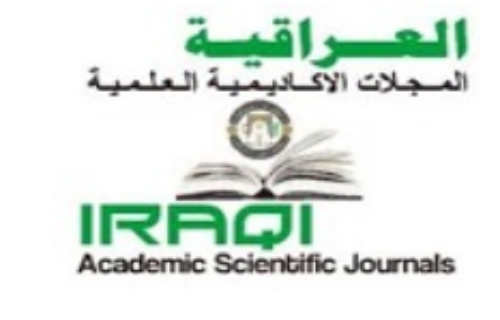Comparative Study of Physicochemical Properties and Metal Contents in Crude Oil from Different Fields in Iraq
DOI:
https://doi.org/10.32792/utq/utjsci/v11i2.1326Keywords:
Crude Oil Quality; Physicochemical Parameters; Wear Metals; Heavy metals, ICP-OES and ICP-MS.Abstract
This research evaluates the physical and chemical properties and concentration of trace elements and heavy metals in Iraqi crude oil. The way in which geographical locations affect oil quality is not widely known, especially in the Middle East. Therefore, crude oils from three locations (East Baghdad, Khurmala, and Nahr Omar) were selected. The physical and chemical data showed apparent variations in the properties of crude oils from different fields. Nahr Umr oil was the lightest (D = 0.8199 g/cm3, API = 40.57°) and the lowest in sulfur content (1.327 wt%), East Baghdad oil was the heaviest (D = 0.9067 g/cm3, API = 24.39°) and the highest in sulfur content (3.842 wt%), while Khurmala was (D = 0.8518 g/cm3, API = 34.12°) and (2.44 wt%) of sulfur content, reflecting the differences in the quality of crude oils. Advanced techniques such as the rotating disc electrode optical emission spectrometer (RDE-OES) and inductively coupled plasma (ICP-OES/MS) were used to measure the element content after sample preparation using microwave acid digestion. The content of metals in crude oil indicates that East Baghdad oil contains the highest rate of V, Al, Ag, and Hg. At the same time, Ni, Fe, Na, Ca, Pb, Se, and Li were higher in Khurmala oil, while Mo, Ti, Sr, Bi, Ba, and Hg were higher in Nahr Umr. The statistical analysis of the least significant difference (LSD) test was used to show the significant differences between the measured element concentrations at the 0.05 level
Received:2024-11-30
Revised: 2024-12-13
Accepted:2024-12-19
References
M. T. Khathi and A. A. Ali, “A comparative study of Iraqi crude oil taken from the Nasiriyah refinery with various local and global crude oils.,” University of Thi-Qar Journal of Science, vol. 6, no. 1, pp. 70–77, Dec. 2016.
M. Q. Saleh, Z. A. Hamad, and J. R. Hama, “Assessment of some heavy metals in crude oil workers from Kurdistan Region, northern Iraq,” Environmental Monitoring and Assessment, vol. 193, no. 1, Jan. 2021.
A. Abdulrazzaq Hadi and A. Abdulkhabeer Ali, “A review of petroleum emulsification types, formation factors, and demulsification methods,” Materials Today: Proceedings, vol. 53, pp. 273–279, 2022.
L. S. Tiewsoh, M. Sivek, and J. Jirásek, “Traditional energy resources in India (coal, crude oil, natural gas): A review,” Energy Sources, Part B: Economics, Planning, and Policy, vol. 12, no. 2, pp. 110–118, Feb. 2017.
X. F. Wu and G. Q. Chen, “Global overview of crude oil use: From source to sink through inter-regional trade,” Energy Policy, vol. 128, pp. 476–486, May 2019.
A. Abdulrazzaq Hadi and A. Abdulkhabeer Ali, “Chemical demulsification techniques in oil refineries: A review,” Materials Today: Proceedings, vol. 53, pp. 58–64, 2022.
K. Salim Abdul-Baqi, N. Rao Lakkimsetty, and V. Manappallil Joy, “Demulsification of water in oil emulsion via non– ionic surfactants: Statistical modeling and optimization,” Materials Today: Proceedings, vol. 92, pp. 841–848, Apr. 2023.
D. E. Adanenche, A. Aliyu, A. Y. Atta, and B. J. El-Yakubu, “Residue fluid catalytic cracking: A review on the mitigation strategies of metal poisoning of RFCC catalyst using metal passivators/traps,” Fuel, vol. 343, p. 127894, Jul. 2023.
A. Habib, H. N. Bhatti, and M. Iqbal, “Metallurgical Processing Strategies for Metals Recovery from Industrial Slags,” Zeitschrift für Physikalische Chemie, vol. 234, no. 2, pp. 201–231, Feb. 2020.
D. LI, “Crucial technologies supporting future development of petroleum refining industry,” Chinese Journal of Catalysis, vol. 34, no. 1, pp. 48–60, Jan. 2013.
T. AL-Saadi, A. Cherepovitsyn, and T. Semenova, “Iraq Oil Industry Infrastructure Development in the Conditions of the Global Economy Turbulence,” Energies, vol. 15, no. 17, p. 6239, Aug. 2022.
Z. Caineng et al., “Geological features, major discoveries and unconventional petroleum geology in the global petroleum exploration,” Petroleum Exploration and Development, vol. 37, no. 2, pp. 129–145, Apr. 2010.
A. B. Ogbesejana, B. Liu, and M. Ostadhassan, “Stable Isotope Geochemistry of the Organic Elements within Shales and Crude Oils: A Comprehensive Review,” Molecules, vol. 27, no. 1, p. 34, Jan. 2022.
Z. Wang, C. Yang, Z. Yang, C. E. Brown, B. P. Hollebone, and S. A. Stout, “4 - Petroleum biomarker fingerprinting for oil spill characterization and source identification,” ScienceDirect, Jan. 01, 2016.
L. M. Wu, C. H. Zhou, J. Keeling, D. S. Tong, and W. H. Yu, “Towards an understanding of the role of clay minerals in crude oil formation, migration and accumulation,” Earth-Science Reviews, vol. 115, no. 4, pp. 373–386, Dec. 2012.
A. G. Okunev, E. V. Parkhomchuk, A. I. Lysikov, P. D. Parunin, V. S.
Semeikina, and V. N. Parmon, “Catalytic hydroprocessing of heavy oil feedstocks,” Russian Chemical Reviews, vol. 84, no. 9, pp. 981–999, May 2015.
J. Liu, Y. Huang, H. Li, and H. Duan, “Recent advances in removal techniques of vanadium from water: A comprehensive review,” Chemosphere, vol. 287, p. 132021, Jan. 2022.
U. Bharatiya, P. Gal, A. Agrawal, M. Shah, and A. Sircar, “Effect of Corrosion on Crude Oil and Natural Gas Pipeline with Emphasis on Prevention by Ecofriendly Corrosion Inhibitors: A Comprehensive Review,” Journal of Bio- and Tribo-Corrosion, vol. 5, no. 2, p. 35, Feb. 2019.
M. Balali-Mood, K. Naseri, Z. Tahergorabi, M. R. Khazdair, and M. Sadeghi, “Toxic Mechanisms of Five Heavy Metals: Mercury, Lead, Chromium, Cadmium, and Arsenic,” Frontiers in Pharmacology, vol. 12, no. 643972, Apr. 2021.
M. S. Sankhla, Mayuri Kumari, M. Nandan, R. Kumar, and P. Agrawal, “Heavy Metals Contamination in Water and Their Hazardous Effect on Human Health-A Review,” papers.ssrn.com, Sep. 22, 2016.
N. Saqib and M. Bäckström, “Chemical association and mobility of trace elements in 13 different fuel incineration fly ashes,” Fuel, vol. 165, pp. 193–204, Feb. 2016.
K. Jankowski and E. Reszke, “Recent developments in instrumentation of microwave plasma sources for optical emission and mass spectrometry: Tutorial review,” Journal of Analytical Atomic Spectrometry, vol. 28, no. 8, p. 1196, 2013.
F. Laborda et al., “Detection, characterization and quantification of inorganic engineered nanomaterials: A review of techniques and methodological approaches for the analysis of complex samples,” Analytica Chimica Acta, vol. 904, pp. 10–32, Jan. 2016.
M. C. Zuma, J. Lakkakula, and N. Mketo, “Recent trends in sample preparation methods and plasma-based spectrometric techniques for the determination of rare earth elements in geological and fossil fuel samples,” Applied Spectroscopy Reviews, vol. 57, no. 5, pp. 353–377, Dec. 2020.
M. A. Gab-Allah and A. B. Shehata, “Determination of iron, nickel, and vanadium in crude oil by inductively coupled plasma optical emission spectrometry following microwave-assisted wet digestion,” Chemical Papers, vol. 75, no. 8, pp. 4239–4248, Apr. 2021.
Ismail Elkhrachy, A. Alhamami, and S. H. Alyami, “Landfill Site Selection Using Multi-Criteria Decision Analysis, Remote Sensing Data, and Geographic Information System Tools in Najran City, Saudi Arabia,” Remote Sensing, vol. 15, no. 15, pp. 3754–3754, Jul. 2023.
A. K.-T. Mohammad, A. T. Hameed, M. A. Alhamdany, K. Mohammad Al Azzam, and G. A. A. Talk, “Characterization and screening of metals, metalloids and biomarkers in crude oil by ICP-MS/OES, and GC-MS techniques after digestion by microwave-induced combustion,” Biomedical Chromatography, vol. 33, no. 4, p. e4481, Feb. 2019.
Ö. Doğan, H.J. Köroğlu, and V. Pelitli, “Waste oil management: Analyses of waste oils from vehicle crankcases and gearboxes,” Global Journal of Environmental Science and Management, vol. 3, no. 1, 2017, Accessed: Nov. 29, 2024.
A. T. Khadim, T. M. Albayati, and N. M. Cata Saady, “Desulfurization of actual diesel fuel onto modified mesoporous material Co/MCM-41,” Environmental Nanotechnology, Monitoring & Management, vol. 17, p. 100635, Dec. 2021.
A. Abdulrazzaq Hadi, K. Abbas Al-Rudaini, A.Thamer Hameed, S. Mohsen Alardhi,, & Talib Mohammed Albayati, “Utilizing A Millifluidic Approach And Three Variables To Reduce Asphaltene Content Of Crude Oil,” Azerbaijan Chemical Journa, lvol.3, pp. 29-24, Sep. 2024.
M. A. Ajeel, A. A. Ajeel, A. M. Nejres, and R. A. Salih, “Assessment of Heavy Metals and Related Impacts on Antioxidants and Physiological Parameters in Oil Refinery Workers in Iraq,” Journal of Health and Pollution, vol. 11, no. 31, Aug. 2021.
A. R. Rahmani, M. T. Samadi, M. Ghaymali, and H. Motaghipoor, “Determination of Sawdust Efficiency for Cyanide Removal from Aqueous Solutions,” Journal of Water and Wastewater; vol. 22, no. 3, pp. 53–58, Oct. 2011.
A. Abdulrazzaq Hadi, M. Turki, and A. Abdulkhabeer, “Upgrading API and Specific Gravity Specifications of Iraqi Crude Oil Using a Laboratory-Built Multipumping Fuel Analysis (MPFA) System,” Journal of Kufa for Chemical Sciences, vol. 2, no. 9, pp. 353–368, Aug. 2023.
Saja Mohsen Alardhi et al., “Artificial neural network and response surface methodology for modeling oil content in produced water from an Iraqi oil field,” Water Practice & Technology, Aug. 2024.
S. Fakher, M. Ahdaya, M. Elturki, and A. Imqam, “Critical review of asphaltene properties and factors impacting its stability in crude oil,” Journal of Petroleum Exploration and Production Technology, vol. 10, no. 3, pp. 1183–1200, Dec. 2019.
F. Galarraga, K. Reategui, A. Martínez, M. I. Martínez, J. F. Llamas, and G. Marquez, “V/Ni ratio as a parameter in palaeoenvironmental characterisation of nonmature medium-crude oils from several Latin American basins,” vol. 61, no. 1, pp. 9–14, Apr. 2008.
J. A. Ali et al., “Investigating the Influence of Environmental Factors on Corrosion in Pipelines Using Geospatial Modeling,” UHD Journal of Science and Technology, vol. 8, no. 1, pp. 1–12, Jan. 2024.
S. N. Abdulhamid, A. M. Hasan, and S. Q. Aziz, “Solidification / Stabilization of Contaminated Soil in a South Station of the Khurmala Oil Field in Kurdistan Region, Iraq,” Applied Sciences, vol. 11, no. 16, p. 7474, Aug. 2021.
V. K. Yadav et al., “The Processing of Calcium Rich Agricultural and Industrial Waste for Recovery of Calcium Carbonate and Calcium Oxide and Their Application for Environmental Cleanup: A Review,” Applied Sciences, vol. 11, no. 9, p. 4212, Jan. 2021.
C. Scott and T. W. Lyons, “Contrasting molybdenum cycling and isotopic properties in euxinic versus non-euxinic sediments and sedimentary rocks: Refining the paleoproxies,” Chemical Geology, vol. 324–325, pp. 19–27, Sep. 2012.
A. Abdulrazzaq Hadi, and A. Abdulkhabeer, M. Turki, “Desulfurization of Crude Oil by Laboratory Developed Multipumping Flow Injection Analysis System with Optimization by Response Surface Methodology,” Journal of Ecological Engineering, vol. 24(2), pp.382-339, 2023.
A. B. Ogbesejana, B. Liu, and M. Ostadhassan, “Stable Isotope Geochemistry of the Organic Elements within Shales and Crude Oils: A Comprehensive Review,” Molecules, vol. 27, no. 1, p. 34, Jan. 2022.
G. R. Helz, E. Bura-Nakić, N. Mikac, and I. Ciglenečki, “New model for molybdenum behavior in euxinic waters,” Chemical Geology, vol. 284, no. 3–4, pp. 323–332, May 2011.
S. Fakher, M. Ahdaya, M. Elturki, and A. Imqam, “Critical review of asphaltene properties and factors impacting its stability in crude oil,” Journal of Petroleum Exploration and Production Technology, vol. 10, no. 3, pp. 1183–1200, Dec. 2019.
A. Kumar et al., “Lead Toxicity: Health Hazards, Influence on Food Chain, and Sustainable Remediation Approaches,” International Journal of Environmental Research and Public Health, vol. 17, no. 7, p. 2179, Jan. 2020.
M. T. Khathi and A. A. Ali, “A comparative study of Iraqi crude oil taken from the Nasiriyah refinery with various local and global crude oils.,” University of Thi-Qar Journal of Science, vol. 6, no. 1, pp. 70–77, Dec. 2016.
Downloads
Published
License
Copyright (c) 2024 University of Thi-Qar Journal of Science

This work is licensed under a Creative Commons Attribution 4.0 International License.













